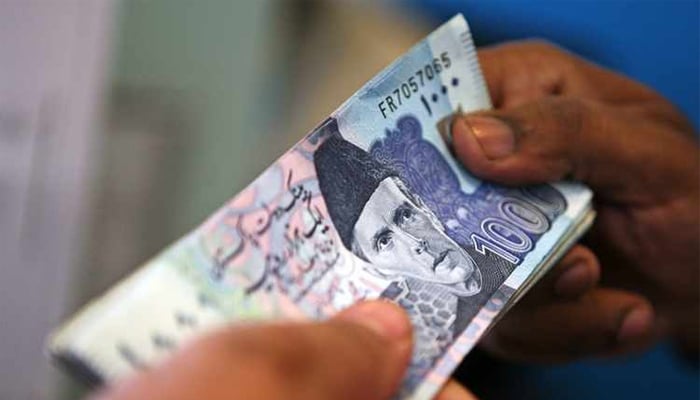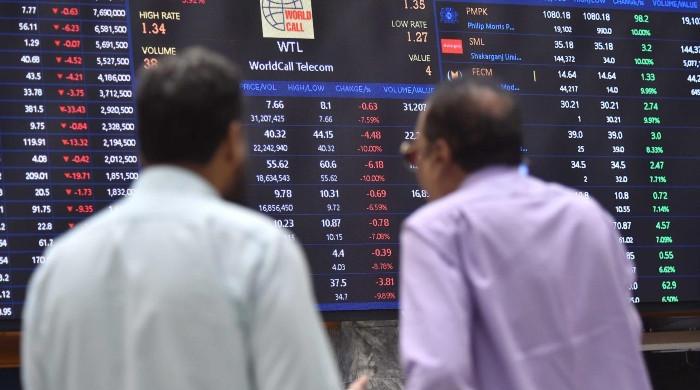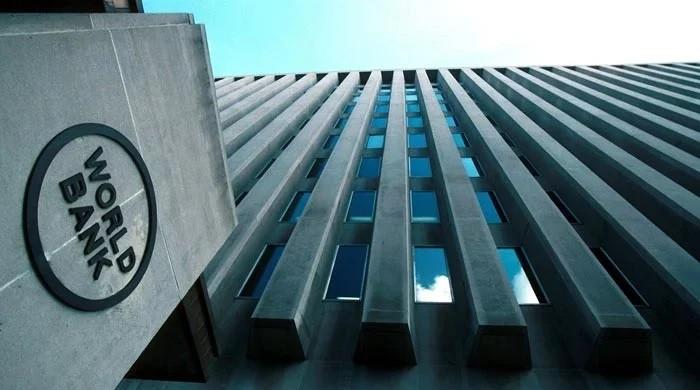Rupee's woeful ride against dollar to continue at slower rate
Analyst says local currency will depreciate slightly as a result of a significant adjustment to the exchange rate
January 29, 2023

- No stability seen unless foreign currency inflows improve: analysts.
- Rupee's value against dollar decreased by Rs32 or 14% this week.
- Analysts say rupee will depreciate slightly as a result of significant adjustment.
KARACHI: Pakistan rupee is expected to decline further in the coming week at a slower rate with no stability unless the foreign currency inflows improve, The News reported Sunday citing analysts.
In the outgoing week, the local currency's performance was poor as it slid from 230.15 to 262.60 against the dollar in the interbank market following two days of devaluation.
The value of the rupee against the greenback decreased by Rs32 or 14%.
Meanwhile, in the open market this week, the local currency dropped by Rs29 to 269 against the dollar.
Pakistan’s currency has been declining to transition to a market-determined exchange rate since control on the currency was removed in compliance with the International Monetary Fund (IMF) conditions.
One of the requirements for resuming a bailout programme Pakistan sought from the IMF is a market-based currency rate. Pakistan's finances have been in disarray due to diminishing foreign exchange reserves and stalled external financing.
The cash-strapped country has hardly three weeks’ worth of import coverage in its foreign exchange reserves and is struggling with a severe balance of payments crisis. Pakistan is desperate to secure external funding to avoid default.
The central bank’s foreign exchange reserves have depleted to $3.7 billion as of January 20.
“The rupee will depreciate slightly over the coming week as a result of a significant adjustment (to the exchange rate) that was previously made over the last two sessions,” said an analyst.
The crucial $1.1 billion tranche, which is a part of a $6 billion IMF loan agreed upon in 2019, was initially scheduled to be released in November 2022, but the Fund has yet to approve its release.
Due to the IMF's demands that the government has to carry out fiscal consolidation measures and economic reforms, recent discussions regarding resuming the bailout have been put on hold.
The resident representative of the global lender announced on Thursday that an IMF mission will arrive in Pakistan next week to discuss the ninth review of the country’s ongoing funding programme, which has been halted.
“While there was no intervention in the forex market on Friday, the rupee/dollar parity struggled to go up beyond 264, and after staying at that level, receded somewhat to close at 262.60. Indeed, there was interest from exporters at these levels,” said Tresmark in a client note.
“The market will struggle to go above 270 in the short-term, correcting to 265 levels, if there is no negative news on the IMF or the political front. But traders will keep a close watch on depleting reserves which went below $10 billion for the first time in years,” it added.
In spite of the interest rate hike and the devaluation round, there are still differences between Pakistan and the Fund. But it seems like Pakistan’s position has changed from resisting to negotiating.
“If things fall into place, we may see IMF inflows as early as mid-February. And an IMF staff-level agreement will most likely pave way for more substantial inflows from friendly countries and multilateral agencies,” it noted.
The exporters have drawn more loans even though export activity was low. This suggests that exporters borrowed in the local currency (at high rates) but did not bring in their export proceeds. Analysts estimate this figure to be around $2.5 billion. Now having a windfall they may not wait for the rupee to depreciate further in a race to pay back their high-interest money and to quickly procure raw materials before the prices jump up, according to Tresmark.











